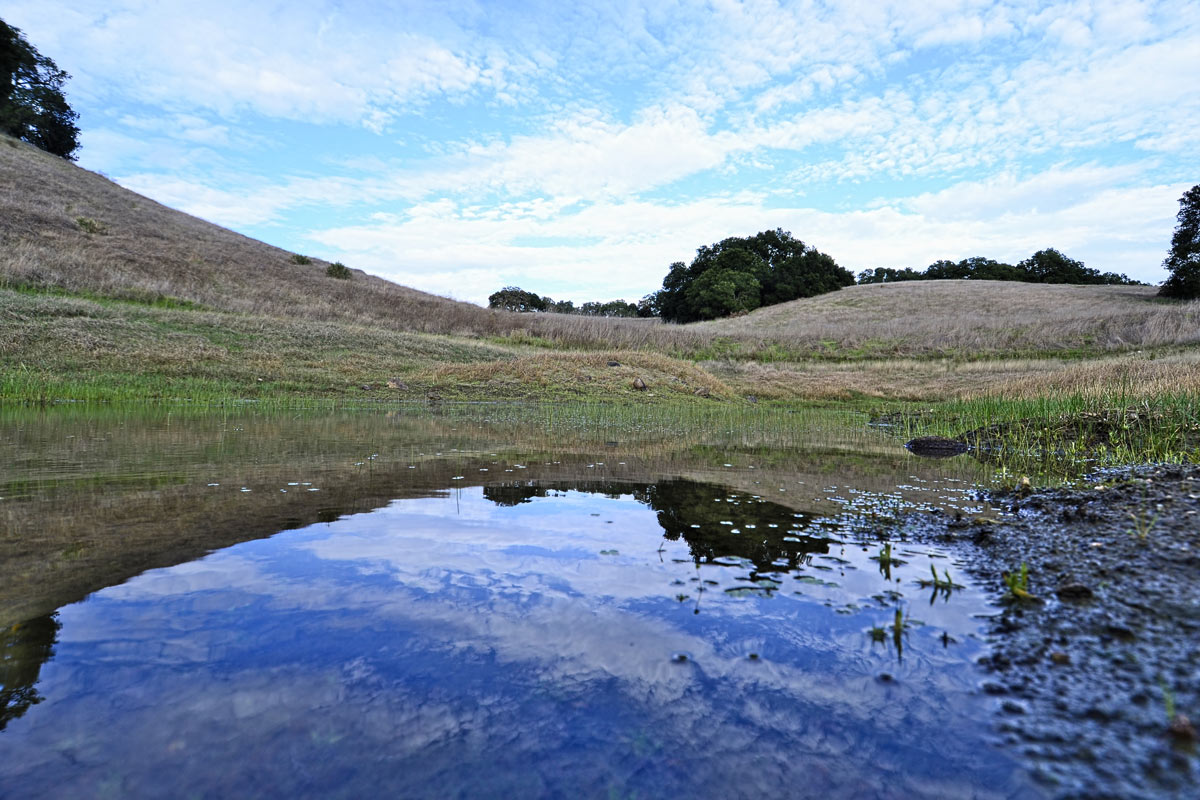Pond-IT Goes Open-Source!
In Mediterranean and arid climates, seasonal ponds play important roles for native species, who’s life cycles coincide with pond inundation duration and timing, or “hydroperiod.” In California, anthropogenically-formed cattle ponds can be valuable aquatic habitat for listed amphibians such as frogs, salamanders, and turtles, but with anticipated changes in climate, these features may be affected by changing air temperature or precipitation patterns.
To effectively manage these features and prioritize restoration and habitat conservation efforts, we have developed a flexible, robust, and cost-effective Pond Inundation and Timing (Pond-IT) model which characterizes the importance of various hydroperiod drivers in these ponds, and addresses two main questions: 1) Can the pond sustain habitat for a target species in its existing configuration? and 2) Can proposed modifications or enhancements create additional habitat that is resilient to changing climate?
Pond-IT is fundamentally a water balance-based model, which infers the monthly balance between hydrologic fluxes of runoff, evapotranspiration, and groundwater, to develop a record of pond water-surface elevation. While this technique is not novel, most water-balance models require many years of monitoring data, which is expensive to acquire, especially in remote environments. In contrast, Pond-IT leverages increasingly available aerial photographs to collect model calibration remotely, which is cost-effective and can span multiple decades. Development of the Pond IT hydroperiod model requires only one field visit to obtain a bathymetric survey; the remaining model inputs use publicly available datasets.
Pond IT was developed using Python, an open-source programming language known for being readable and customizable. Balance Hydrologics, the Guadalupe-Coyote Resource Conservation District (GCRCD), and the Santa Clara Valley Habitat Agency (SCVHA) were recently awarded a Local Assistance Grant (LAG) to fund the development of the Pond-IT model for open-source distribution. The model is now available in Excel and Python formats, links to both versions are below, along with the accompanying guidebook.
Still to come, an on-demand webinar walking the user through the use of the model and a training session is planned for Spring 2020. To get on our mailing list for these and other Pond-IT related announcements, email us at pondit@balancehydro.com.










